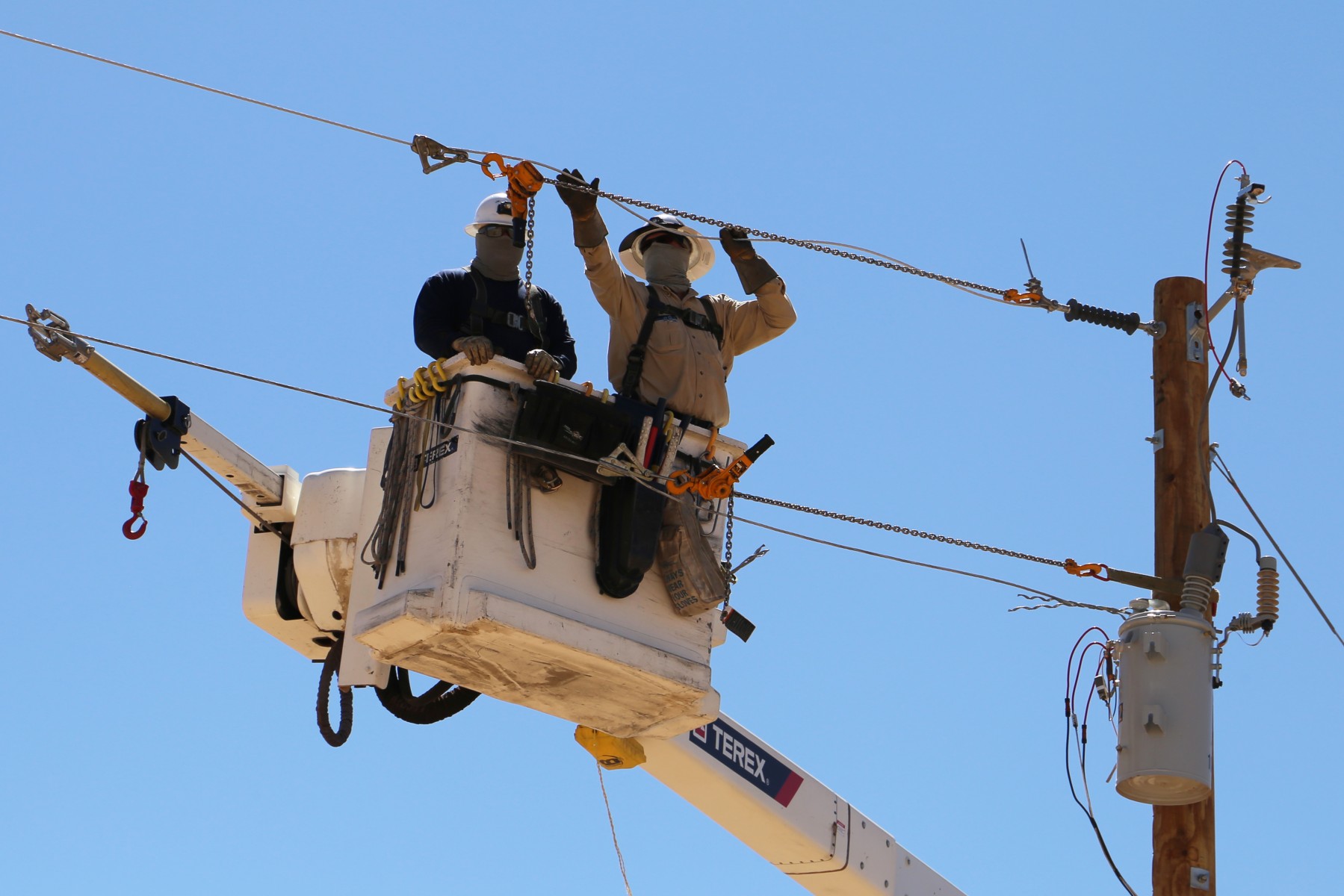
It felt like the greatest thing that ever happened to me.
Week One Completed: 20 Families on the Navajo Nation Now Have Electricity for the First Time Thanks to SRP
Scroll down to download video interviews quoted in the news release and high-resolution photos too. For questions or to set up a story, contact Kathleen at kathleen.mascarenas@srpnet.com. We can coordinate an interview with a line worker from your coverage area. Line workers serving on the humanitarian mission reside in the following cities: Chandler, Gilbert, Glendale, Goodyear, Litchfield Park, Mesa, Queen Creek and Tempe. Spanish speakers available too.

Nine days down and three more work weeks to go. Salt River Project (SRP) line workers based out of Tempe Service Center are working diligently to provide electricity to families on the Navajo Nation in northeastern Arizona whose homes have never had power. So far, SRP line crews have changed the lives of 20 families. Families like Shirley Chee’s.
“I wish my mom and dad would have seen the lights turn on,” said Chee, who received power to her rural home after 30 years of waiting. “Me and my sister were just crying, saying, ‘Oh, mom and dad, look at the lights. Look at the porch lights. They are all on.’ We were just sitting there crying. It’s just so wonderful. We never thought this was going to happen.”
SRP, along with utility companies from 10 states across the United States, are volunteering in a collaborative effort known as “Light Up Navajo.” The American Public Power Association (APPA) and Navajo Tribal Utility Authority (NTUA) are organizers of the eight-week volunteer humanitarian effort. The goal is to electrify 300 homes during that time frame.
“To provide power to someone for the first time, to see their faces when we walk in their homes and they hit that light switch and they no longer have to go outside to put gas in a generator or change batteries in their flashlights, it is amazing to see,” said Marc Sienicki, SRP line working foreman,
Many elders on the Navajo Nation have waited a lifetime to have electricity in their homes, which means they lived without basics such as heating, air conditioning, a refrigerator or running water. Since starting to work last Monday, April 4, two SRP line crews, which total 10 employees, have worked 12-hour days and provided electricity to 20 homes so far.
“It felt like the greatest thing that ever happened to me,” said Chee. “The sun is what our light (was). Before the sun went down, we had to get our stuff done. And at night, we would be in bed asleep because sometimes we didn’t have the money to buy batteries, or the flashlight batteries ran out. We also used kerosene lamps most of the time.”
Public power utilities like SRP are donating manpower, equipment and materials to help the Navajo Nation. The public is also invited to participate in the Light Up Navajo initiative by making cash or material donations. To learn more, visit www.publicpower.org/donate-light-navajo.
“One family came out to us after we finished and said, ‘We’ve been waiting 30 years to get power.’ It was emotional,” said SRP line worker Mark Henle. “They said, ‘It took 30 years and our parents passed away waiting for this process to be completed.’ We are just glad we can help.”
Electrifying just one household is an expensive endeavor. Each household, on average, requires one transformer, 0.6 miles of wire, nine poles, 16 insulators and two arrestors to connect to the electric grid. This is an average material cost of around $5,500. Of the 55,000 homes located on the 27,000-square-mile Navajo Nation (roughly the size of West Virginia), approximately 14,000 homes still do not have electricity. They represent 75 percent of all U.S. households that do not have power.
“SRP has always had a strong relationship with the Navajo Nation. Anything we can do to help, we are certainly going to do it, and this was right up our alley,” said Wayne Wisdom, SRP senior director of Distribution Grid Services. “The Navajo people are so resilient, kind, genuine and humble. They really appreciate what they have.”
SRP is a community-based, not-for-profit public power utility and the largest provider of electricity in the greater Phoenix metropolitan area, serving more than 1 million customers. SRP is also the metropolitan area’s largest supplier of water, delivering about 750,000 acre-feet annually to municipal, urban and agricultural water users.
About APPA
The American Public Power Association is the voice of not-for-profit, community-owned utilities that power 2,000 towns and cities nationwide. We represent public power before the federal government to protect the interests of the more than 49 million people that public power utilities serve, and the 93,000 people they employ. Our association advocates and advises on electricity policy, technology, trends, training, and operations. Our members strengthen their communities by providing superior service, engaging citizens, and instilling pride in community-owned power.

